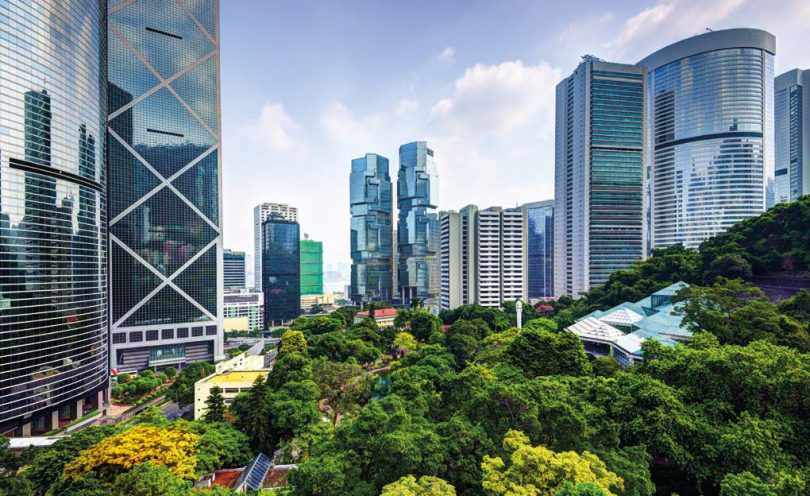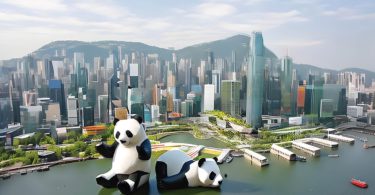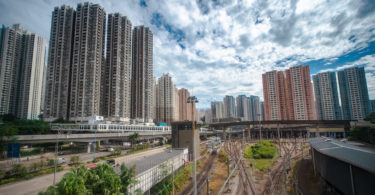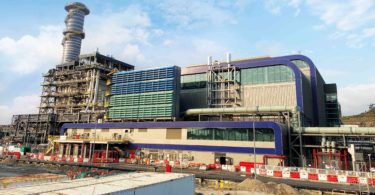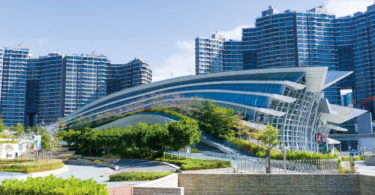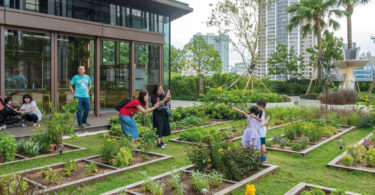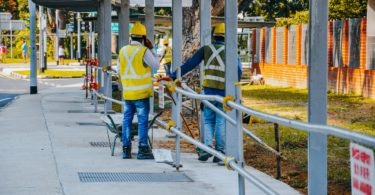These principles are intended to influence future large-scale developments in Hong Kong and the region. They aim to ensure that any large-scale new or redevelopment project is well integrated into its surroundings, is more sustainable, and will add long-term value to the city. The target audience groups for these principles are the public sector, private developers, academicians and the community.
Rethink the strategic vision and policy framework
Hong Kong needs an integrated, strategic city vision, a clear policy framework, and a proactive approach to guide its future development. Isolated and piecemeal development can be avoided through districtwide visions developed through a bottom-up approach engaging the community. Each district should have well-developed three-dimensional urban design plans that complement other district plans as they work towards a shared vision of the city.
Development strategies and district-level plans that integrate new development and regeneration—including adaptive use of some existing buildings in older urban areas and high-quality public space—are needed. All government departments should work together to achieve the common city vision. It is important to clarify with the community, developers, and various stakeholders that the city’s long-term success does not depend solely on high commercial value, but also on social and environmental sustainability to ensure a better quality of life for the people of Hong Kong.
Adopt a placemaking approach
Any new development or redevelopment in a city should be viewed as an opportunity to create great places as a way to improve the district and add long-term value. This presents an opportunity for integrating new developments with existing areas, with all the attendant economic, cultural, and social benefits.
Although developers are motivated to build a commercially successful development, they should also pay attention to the scale and design of the development, respect the surrounding area, and integrate the project. A place-based approach is essential in order to create a unique sense of place and sustainable development.
Using a placemaking approach, large-scale new development can enhance the surrounding area to create a character and personality in line with the district vision. It is important to pay attention to how the building touches the ground to create a place, rather than a project.
The principles of a placemaking approach are:
- Ensure high-quality design to reflect the character of the surrounding community to stimulate activity and economic vitality.
- I ntegrate public spaces with landscaping, attractive street furniture and public art to create a sense of place; allow flexible use of space and promote private events that bring vitality to the area and stimulate social interaction.
- Promote pedestrian connectivity by creating integrated blocks, tree-lined streets, and pleasant walkways, as well as comfortable, well-marked, continuous streets that are vibrant, providing a rich pedestrian experience.
- Create a high-quality public realm that enhances the appeal of the pedestrian environment, strengthens the sense of place, and supports a diverse range of activities.
- Establish a unique identity with landmarks and public space as a gateway to the development to create an attractive destination.
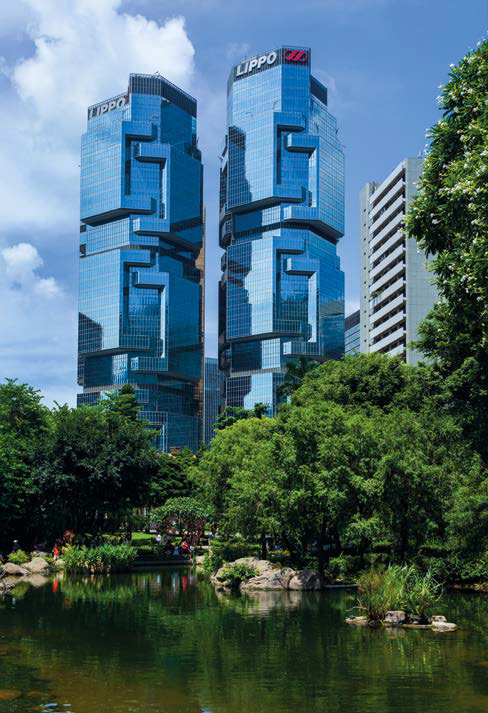
Image by Denys.Kutsevalov/Shutterstock
Develop to an appropriate scale and density
Integrated developments become attractive landmarks where people can live and work, and which people will visit and sustain over a longer period. These integrated developments attract user and stakeholder investment, making them more successful commercially.
It is essential to look at the scale of the district before looking at the scale of the building. Hong Kong has the advantage of being a compact city with convenient transport access, and the Mass Transit Railway (MTR) connects places extremely well with other districts. But because of a project-based approach, recent large-scale projects tend to be less integrated with the existing urban fabric, leading to limited or no public space at grade.
Developers do not wait for a district to improve; they create isolated developments that are inward looking. This attitude of developing isolated gated communities does little for the long-term sustainability of the city. It is important to take heed of the existing grid, penetrate it, and extend it. More recent station-related developments with public spaces above ground are not well integrated with the existing urban fabric.
Building synergy with mixed uses above the station is good, but it should not create isolated development. Station-related development should promote better accessibility throughout the district, not just provide connections to transit and neighbouring buildings. A larger development site may be needed in exchange for designation of more public space within the station-related district development.
Provide accessible public open space
Provision of public open space in private developments is a trend for new urban developments in high-density cities like Hong Kong It is important that public and pedestrian space be a place for people from all walks of society, including young and old, rich and poor. Side-walks should be wide, landscaped with high-quality paving, and attractive in order to bring pedestrians close to buildings. Space should be well defined, with walking routes and bicycle paths provided where feasible.
Ensure transport and infrastructure integration
Station-related mixed-use developments in Hong Kong are built to high standards and provide seamless connection to transit. The challenge moving forward is to better integrate these developments with surrounding areas.
Large-scale developments should be well integrated with infrastructure and the surrounding transport network, and enhance the interface at the ground level. Planning should not only focus on the area within the site boundary, but also consider the site context and the impact of the development on the surrounding area. A development, if viewed independently, may be successful, but may not truly succeed in a wider context and may even be detrimental to the district.
Integration of land use and transport at the district and city levels is important; there is a need for both physical and social integration. Urban integration and pedestrian connectivity are the priorities and need to be well defined because many Chinese cities may follow Hong Kong development patterns and use them as models for success.
Enhance street-level interface and continuity
Narrow streets are pedestrian friendly and offer good opportunities to connect with the surroundings. Buildings should meet the street in a pedestrian-friendly manner to ensure that streets are vibrant and active.
In the planning and development of a site, pedestrian accessibility at the street level should always be a priority. This will result in cities that are more walkable and livable. A strong sense of place and community ownership, as is evident in the older urban areas of Hong Kong, can also be reintroduced within newer developments.
Facilitate good urban design and flexible zoning
Development in Hong Kong occurs too quickly, leaving little opportunity for conservation of historic buildings or preservation of traditional character. Integration of new and existing developments, the traditional and modern, and Western and Asian style is important. For example, historic buildings should be reused in a new context; high-rise buildings should keep the old neighbourhood feel.
The government should facilitate good urban design through urban design review, planning, and regulatory framework. With a clear strategic city vision in place, there should be enough flexibility to negotiate with big developers for the public good and keep a balance of diversity to promote social harmony.
Go beyond sustainable building design
Sustainable building design is important to ensure resource efficiency and environmentally friendly developments. It is equally important that large-scale development be well integrated with surrounding areas. Furthermore, it is important to follow sustainable development principles and urban design guidelines to ensure the developments remain integrated and sustainable in the future.
During planning, the focus should not be solely on the sustainability of buildings within the development; it should also consider the development’s sustainability, its integration with the adjacent areas, and its impact on the district and the city as a whole. Buildings that are successful within the site may not be truly successful and may have a negative impact in a wider context.
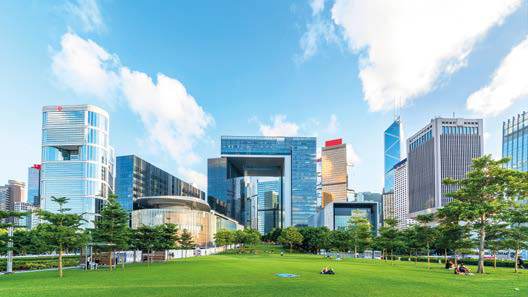
Image by Lee Yiu Tung/Shutterstock
Enable upfront public engagement
Public engagement is a comparatively new concept and practice in Hong Kong. Upfront public engagement is important so that there is a clear vision for the area and issues do not surface later on. Before the land is sold to the developer, there should be clarity on the vision for how the development should proceed as well as clear urban design guidelines.
Implement coordinated management control
How large-scale developments are managed will greatly influence how they are used and function. The roles of ownership and management control do not need to be the same. A development with multiple owners can contribute to diversity, but one owner with multiple designers can also contribute to diversity.
The key is coordinated management control, whether that management is by the public or private sector, or involves a single developer or multiple developers. For coordinated development control, an overall management program is needed. Whether ownership involves a single party or multiple parties is less of an issue; it is coordinated management control among the various parties involved that is the key to success.
Urban Land Institute. Ten Principles for a Sustainable Approach to New Development: Towards Sustainable and Integrated Large-Scale Developments for a More Livable Hong Kong. Washington, D.C.: Urban Land Institute, 2011.



